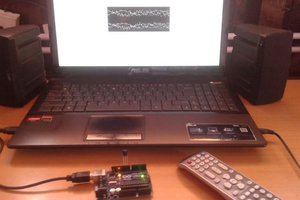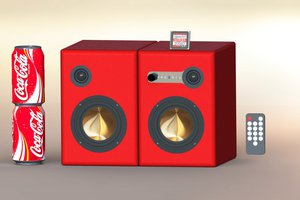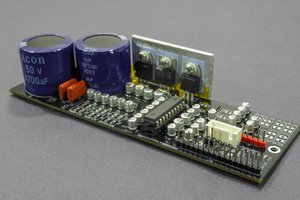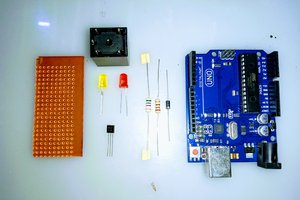In this design, we combine PT2322 with Arduino Nano and interface it with PC/embedded computing boards through a USB port. Native GTK UI application provides to control all functions of the PT2322 IC.
The Arduino Nano can directly plugin to the PT2322 module. There are three push buttons on the panel itself to control the volume and mute the audio.
To reduce the cost and minimize the PCB size, we use both SMD and through-hole-type components in this PCB. The dimension of the PCB is 59mm × 60mm. The PCB of this module can directly order from the PCBWay project page. Using the PCBWay service, you can order high-quality PCBs at low prices. Use the PCBWay online quote tool for pricing and more details.
The Arduino firmware in this project is developed using PlatformIO. The host-side control application is written using GCC C. This UI application can be compiled and run on any Linux/GTK compatible board like PCs, Raspberry Pi, Orange Pi, BeagleBone Black, etc. All communication between the host and the module is performed through the USB UART interface provided by the Arduino Nano board.
At the prototyping stage, we test this board using an ASUS Xonar SE 5.1 channel soundcard and Creative Inspire T6300 - 5.1 analog speaker system. The above setup delivers clean audio output without any noticeable distortion.
In PT2322, the tone control system applies to front-end channels only. The remaining channels work independently from the tone control system. This is a design limitation of the IC. From our experience, this can sometimes adversely affect the surrounding listening experience.
The PT2322 has a 3-way tone control system that allows bass, mid-range, and treble control over a range of -14dB to +14dB. A 6-channel attenuation system provides up to 15dB attenuation per channel. All these controls divide into 15 steps. The master volume control can use to adjust attenuation from 79dB to 0dB in 80 steps.
This audio processing module is an open-source hardware project. All the design files, source codes, and compiled binaries are in the project repository at github.com. Dilshan Jayakody
Dilshan Jayakody
 vigneshraja
vigneshraja
 unusual_thoughts
unusual_thoughts

 Magnus Emenuga
Magnus Emenuga